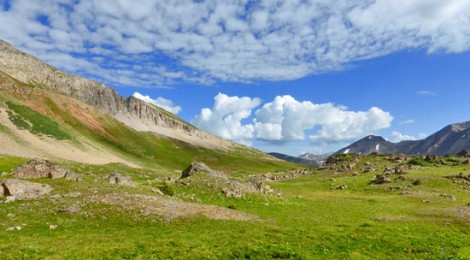
Leave Clear Footprints So Others Can Follow More Easily
In living lives with a love of Nature while we might hope to ‘take nothing but pictures and leave nothing but footprints’
It is vital sometimes that we leave clear footprints.
Stories of loving and living with Mother Nature, including the Bear facts!
How my peaceful encounter with some baby Grizzly bears and their mother saved an entire mountain range
There is an old conservationist maxim that states, “Take nothing but pictures, leave nothing but footprints.” I learned this some many decades ago and as I grow more and more grey and I find some wisdom that comes from a long life I have discovered how very wise this old adage is. But there is a corollary to it that is so often ignored and that is that our footsteps in loving exploration of nature can create a gift to Nature if we leave a clear path helping to show others the way to care for Nature.
One lasting gift we can make is to be sure to leave clear footprints so that others who follow in those footsteps can more easily cover the same ground with the luxury of following a proven trail. This eases the demand on these followers to make progress and frees them to cast their gaze and attention away from the trail and more easily discover and experience the wonders of Nature. It is in the human discovery and joyful experience of Nature that one develops a true love which in turn results in our devotion for her protection.
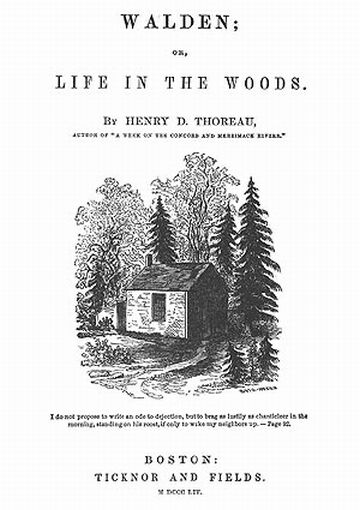
In Kindergarten I learned to swim in pond just down the road from my home, it was Walden Pond, home to Thoreau. Somehow being dipped in his magic waters led to my being a life long conservationist.
There have been many times over my decades of wandering when I travelled to wild places where no man had been before, where no trails existed, and going was difficult because there were no footprints to walk in. Often it was exciting, sometime exhilarating, occasionally horrifying.
When I was at my youngest I revelled in my wilderness skills and sought out the most untraveled places. It was in wilderness, I was sure, that I might discover what Thoreau has written of when he wrote ‘in wilderness is the preservation of the world.”
Ralph Waldo Emerson had written of Thoreau, “It was a pleasure and a privilege to walk with him. He knew the country like a fox or a bird, and passed through it as freely by paths of his own.”
In my youth I wanted so much to discover through personal experience the same truths written about by Thoreau, Emerson,, Leopold, Muir, Abbey and others. Though many times I have travelled my wilderness paths with friends and companions, often I travelled alone. I have learned it is vital for wild places to leave a clear trail and footsteps in which others can travel more easily and extend as they take on the quest with the same love and devotion. There is more to be done than can be accomplished in a single lifetime.
Dangers and lessons learned
Travelling alone exposes one to dangers whether that travelling is truly alone in the wilderness or figuratively so. One time some decades ago I was blessed with a job where my skills and experience in ecology and wilderness were of use to government. I was the point man in a vast region of Western Canada. My bailiwick was an area that encompassed essentially everything in Western Canada from the Rocky Mountains west. My Ministry of government in which I was the sole environmental guy managed all mines, oil and gas, and other energy resources, explorations, and developments – all of my co-workers were engineers and geologists.
The engineers I worked for and with had discovered that constant battling with ‘greenie’ fish and wildlife ecologists like me was mysteriously troubling. I was hired by Premier Bennett and the cabinet of British Columbia and imposed upon the recalcitrant engineers to show them how to make engineering easier by getting along with instead of battling Nature. These days this work is fashionably called ‘adaptation.’
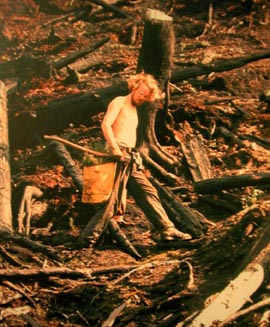
A couple years before becoming an ‘Officer of the Queen’ with royal sway over engineers 30 years my senior I was replanting trees as seen here on a slash burned British Columbia landscape 1973/
While much of my time I spent in an office in Victoria writing and reviewing reports and proposals where all of my colleagues were 30 years my senior, I was expected to tell these older gray-haired engineers how to adapt and ‘to do the right thing by the environment.’ They were uncooperative when being told what to do by ‘outsiders’ so I was brought in as their ‘token’ insider environmentalist. Being too young (a twenty something) and too wild to know better than to speak out of line to my elders that is what I did. It just worked.
Magic Carpet Ride Into Wilderness
My reward, as far as I thought was most personally rewarding, (in exchange for working day to day with my dinosaur colleagues), was that I was often the first man other than some exploration geologist to go to some really wild places. Sometimes I would make the first on the ground observations ever of what wildlife and ecological values were in those wild places. I was not the sort of government environmentalist who only left their vibram footprints on pavement!
My commuting mode of transportation into the wilds was a jet powered helicopter, a magic flying carpet if ever there were one. With stereo headphones on playing my favourite music to drown out the roar of the jet engine I could scout remote mountain ranges with a vantage point of an eagle. Sometimes I would have my pilot set me down at one end of a wilderness mountain range where no road had yet reached and leaving me there with my backpack come back in a weeks time and pick me up at the other end of the mountain range. Nothing short of heaven for me.
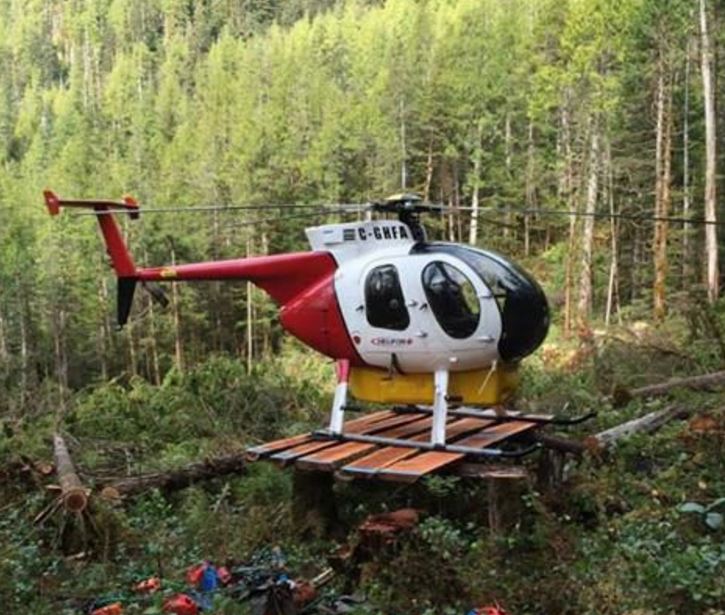
Living with a magic carpet like this for a few years brought me into the wildest of places… often we had to hack our own woody airfield.
Once while doing this I was in mountain territory where the animal life knew nothing of man. To trek there by land would require perhaps 2-3 weeks of bush whacking through virgin forests. My drop off location was on a mountain top, where in this very windy place the pilot could land safely. But windy mountain tops are also blown clear of biting flies in the summer so as we landed my helicopter we had to very carefully make the machine sort of wiggle down as the top of the mountain was covered with Big Horn Sheep.
The herd of a hundred or so magnificent animals would simply not make room for the chopper despite its thundering noise. They had neither experience nor fear of such things nor of me as I learned after I exited my noisy bird and it flew away. I still remember almost having to push the animals away to allow me to pass down off of that rounded mountain top. Once off the windswept peak I discovered the sheep’s powerful motivation to stay put as out of the wind the biting flies were abundant and merciless.
Some Bear Facts
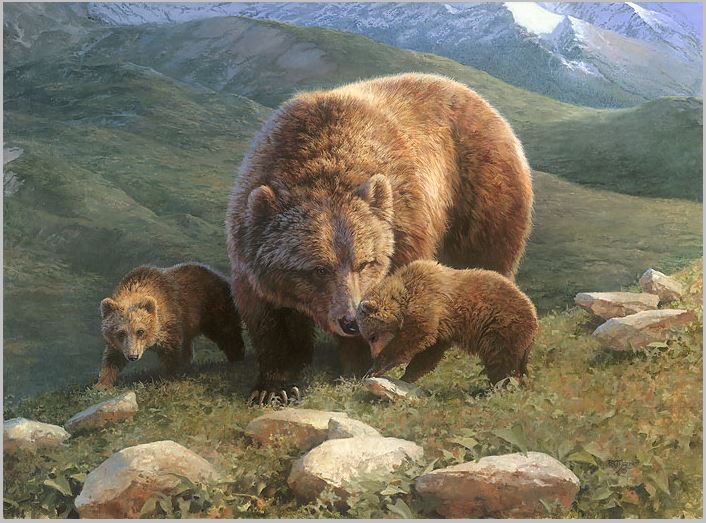
Mother Griz and curious cubs rather like my encounter… art for sale by the artist http://www.eleganthorsepictures.com/marris-mountain-mama.html
As I walked that wilderness mountain range in the farthest northern reaches of the Rocky Mountains I could see what drew the mining geologists to have applied for permits to explore there. The mountains were layer cakes of rock and coal. Several days later approaching the end of the mountain range I was climbing to the top of a steep ridge I needed to cross. I was weary from hiking all day and had my head down.
I reached up with my hands and hefted myself onto the ridge and as I stood erect looking away at a new vista I felt something tugging at my right pant leg. Looking down I saw that it was a very young grizzly bear cub and immediately its sister cub started at my left cuff. In an instant the mother bear stood erect right next to her cubs and was literally nose to nose with me, to this day when I recall this I can still smell her breath, not so sweet.
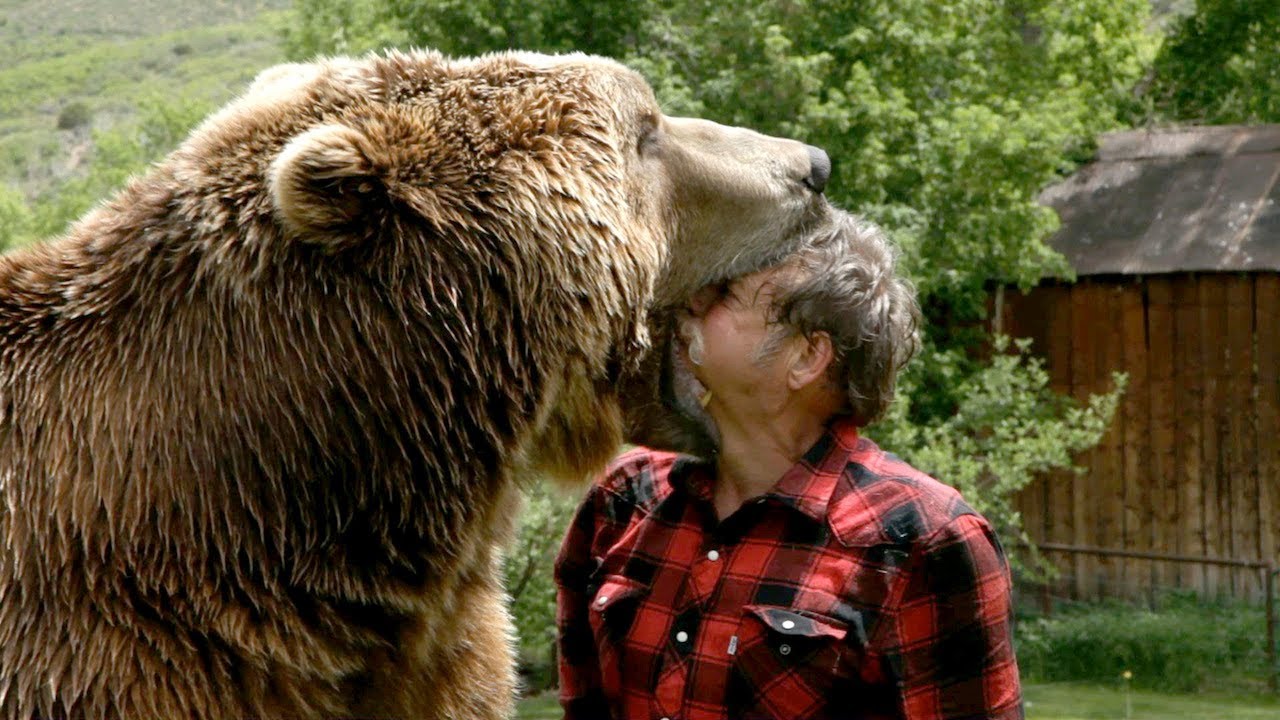
Not the same mother bear of my encounter, but her kin. Believe me this is the image that was in my mind when talking ever so sweetly to the Momma Griz I met in the wilds.
Fortunately I stand over six feet tall and was dressed in a big mountain parka and had on my back a large Kelty frame pack and I stood slightly on higher ground than the mother grizzly. She surely knew immediately I was male and a big one and that I had the higher ground. Male grizzly often kill bear cubs. Standing on her hind legs she opened her mouth in a giant toothy roar shaking her head from side to side all the time I was well within the reach of her paws no more than half an arm’s length separated us. While carried a rifle for ‘bear defense’ it was slung over my pack, fortunately I think as I might have tried to do something stupid if it had been in my hands.
For all the world this was a scene out of an old episode of grizzly Adams, but this was a truly wild griz. There was nothing I could do save to talk to her and I immediately started saying in a gentle non threatening voice “hi momma bear those are beautiful cubs you’ve got. I’m not here to do any harm to them. They are pesky aren’t they…” and some more aimless babble. She and I stood together breathing each others breath for what seemed a long time and lucky for me she dropped down to all fours and with one swipe of a paw she brushed both cubs away from my pant cuffs not so much as touching me with her long sharp claws.
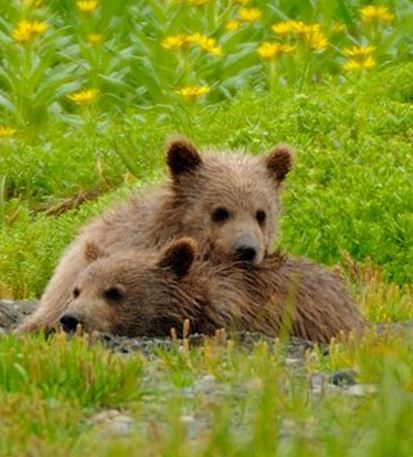
Griz cubs on the tundra, cute as can be, but speak nicely to their momma or else.
The cubs went tumbling down the gentle heather and wildflower covered mountain slope, that side of the mountain being the opposite to the very steep side I had come up from. Momma Griz turned to follow the cubs down the mountain pausing for but a moment to look over her shoulder at me and grunt. We were both clearly thankful no altercation had taken place, but surely while I may have had the upper hand she would have finished me with the first swipe.
It was a very special place, herds of mountain sheep, mountain caribou, and grizzlies and untouched by man. I knew well the value of my bear blessing that day as in my role as a government officer I had been called on to fly in to evacuate a pair of geologists who had been horrifically mauled by a mother grizzly on an adjacent mountain range.
Applying the lesson
Back in my office I refused to sign the exploration permit that would have allowed the mining company to bull-doze a road to that mountain range and instead required that they first explore on foot like I had done. That meant they would not receive the precious government subsidies that paid for ‘road construction’ and often paid the whole cost of the enterprise of speculative mining development. They choose to go elsewhere and to this day that mountain range remains far out of reach of man, no road is there that would allow hunters to drive in for the slaughter, the animals have been safe for more than 30 years now.
The footprints I left there are long gone save the existential footprints that have been followed many times since by the practice of first having someone with a love and knowledge of the value of nature go in before the bulldozers to see what might be lost by unleashing monster machines without any thought or care for nature. It doesn’t always happen but I performed this task many times.
A lesson to keep in mind if you travel my path though, “when in grizzly country watch where you are going.”
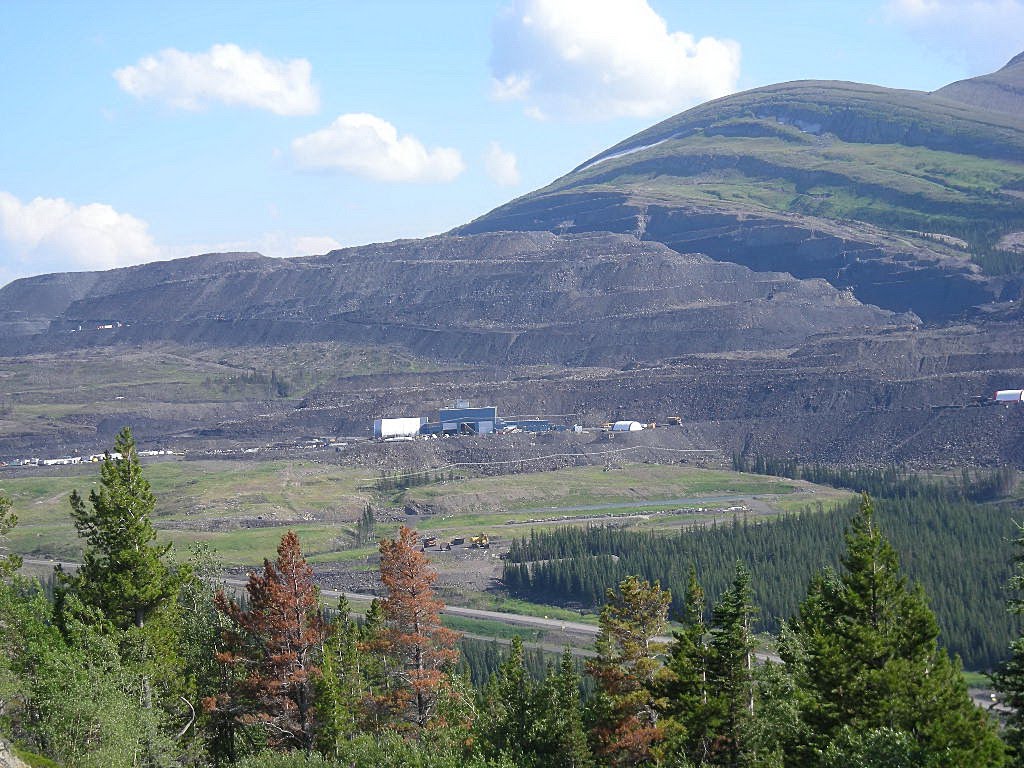
Babcock mine near Tumbler Ridge BC
Win some lose some
While I have preserved and conserved some precious wilderness habitat and it’s animals I didn’t manage to keep the whole of that area free of industry. Below in the Babcock Mine that operated for a few years in the area before the bottom fell out of the coal market.
Many years ago I wrote of my experiences in the wild Northern Canadian Rockies and shared my photographs of this part of the world in an edition of Canadian Geographic Magazine (q970’s). I have since lost my ragged copy of that magazine and my Kodachrome slides and alas digital archives of the magazine don’t go back that far. Perhaps one day I will find a library with a collection and scan some of my memories onto my Ipad. Of course in my mind’s eye I still enjoy vivid pictures of those days and that bear family.








